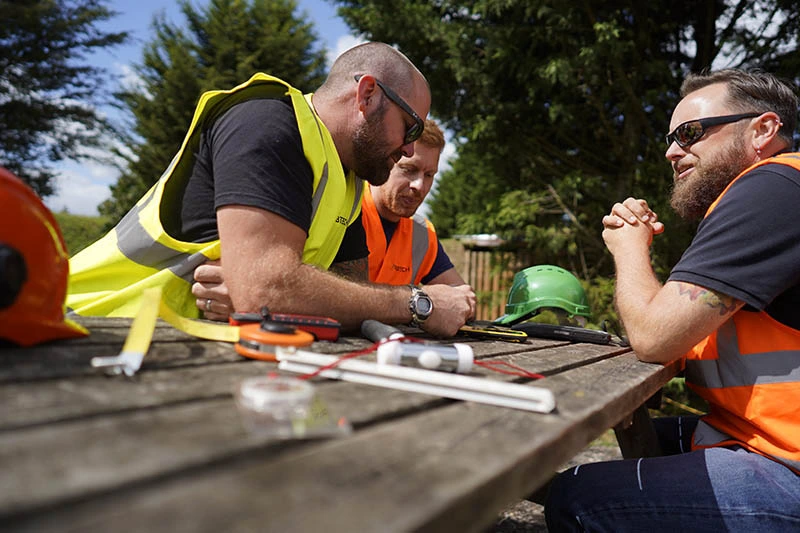All you need to know about a geo-environmental risk study: get a quick and efficient assessment
While developing a site offers opportunities, there are a range of risks to consider before embarking on a project. A geo-environmental risk study will identify and evaluate risks such as contamination and geotechnical hazards, enabling you to assess their potential impact on a proposed development scheme.
What is a geo-environmental risk study?
A geo-environmental risk study is a comprehensive assessment of the environmental and geological conditions of a site to identify potential risks that may impact land development, construction projects, or environmental compliance. This risk assessment evaluates soil, groundwater, and geotechnical factors to ensure that the site is safe and suitable for its intended use and future end users.
Site assessments and survey reports are designed to protect human health and controlled waters. They are typically required in land development, infrastructure projects, property transactions and environmental due diligence.

When is a geo-environmental survey required?
Common reasons for commissioning geo-environmental risk assessments include:
1. Planning applications
A local authority will often require a geo-environmental risk study when assessing planning applications. This ensures that potential risks, such as contaminated land or ground instability, are identified and addressed early. If planning conditions are imposed, a risk assessment prepared by a competent person should satisfy planning conditions and ensure rapid condition discharge.
2. Brownfield site redevelopment
Developing previously used industrial or commercial land (brownfield sites) carries the risk of contamination from past activities. A geo-environmental risk study helps determine whether remedial works are necessary before construction can proceed.
3. Infrastructure and large-scale developments
Major construction projects, such as roads, bridges, and housing developments, require a thorough assessment of geological and environmental conditions to mitigate unacceptable risks associated with unstable ground, flooding, ground gas or soil contamination.
4. Property transactions and due diligence
Property buyers, developers, and investors often commission a risk study to assess potential liabilities associated with contaminated land, ensuring informed decision-making during the planning process.
5. Environmental compliance and risk management
Regulatory authorities such as the Environment Agency and a local authority may require environmental data from this study to comply with environmental regulations and manage potential risks associated with contaminated land, groundwater contamination, and hazardous materials.

Geo-environmental risk assessments
Qualified geo-environmental consultants will follow a structured methodology and generic quantitative risk assessment criteria to assess risks and recommend appropriate mitigation measures on contaminated land. The process typically includes the following phases:
Phase 1: Preliminary risk assessment (desk study)
- The preliminary risk assessment involves a desk-based study to gather background information about the site location, including reviewing historical maps, aerial photographs and land use records.
- Examining environmental databases for past contamination issues.
- Identifying potential sources of pollution from previous or adjacent land uses.
- Conducting a site walkover survey to observe potential sources or any visible signs of contamination, unstable ground, or drainage issues.
- Information may be collated into a conceptual site model that helps identify potential sources of contamination, pathways and receptor links.
If the site walkover survey identifies potential geotechnical risks in this phase 1 preliminary risk assessment process, further investigation is required, for example a coal mining risk assessment.
Phase 2: Intrusive site investigation
If the desk study, site walkover and preliminary risk assessment suggests potential risk, such as environmental or geotechnical issues, an intrusive site investigation or geotechnical assessment is conducted. The phase 2 ground investigation involves:
- Soil and groundwater sampling: a ground investigation to collect samples from various depths and locations for laboratory analysis for potential contaminants. Trial pits may be dug to assess ground conditions in a cost effective way. Gas and groundwater monitoring wells may be installed or open hole boreholes for investigating coal workings and mine entries to complete a coal mining risk assessment.
- Geotechnical testing: assessing soil stability, compaction, and bearing capacity to determine suitability for construction on potentially contaminated land. This step will vary depending on individual site requirements.
- Chemical analysis: testing for contaminants such as hydrocarbons, heavy metals, asbestos, and volatile organic compounds.
- Groundwater monitoring: evaluating the potential for contamination migration or flooding risks.

Phase 3: Risk assessment and recommendations
Based on the findings of the preliminary assessment and site investigation, a detailed risk assessment is conducted, evaluating:
- The presence and concentration of contaminants.
- The impact of geological conditions on development feasibility.
- The potential risks to human health, water sources, and the wider environment.
If risks are identified, mitigation measures are recommended, which may include:
- Soil remediation: removing or treating contaminated soil.
- Groundwater treatment: managing contamination risks in groundwater.
- Geotechnical improvements: stabilising soil to support construction.
- Drainage solutions: implementing flood risk mitigation measures.
Phase 4: Reporting and compliance
The final phase involves compiling the results and recommendations into a risk study report, which is submitted to relevant stakeholders such as a local authority, developers, and investors. This report provides:
- A summary of findings from desk studies, site investigations and the conceptual site model.
- Risk assessments for contamination, ground stability, and environmental impact.
- Recommendations for mitigation and compliance with regulatory requirements.
- Supporting documentation for planning applications and environmental compliance.

Geo-environmental services
A risk study is a crucial step in assessing the suitability of land for development, identifying potential environmental and geological risks, and ensuring compliance with regulatory requirements set by bodies such as the Environment Agency. Whether required for planning applications for a proposed development, property transactions, large-scale infrastructure projects, or to satisfy planning conditions, this study provides essential data to support informed decision-making and risk mitigation when it comes to contaminated land.
Geo-environmental solutions
If you need a geo-environmental risk study, engaging a consultancy with extensive experience will ensure thorough assessment, compliance with regulations, and protection of investment interests. Arbtech’s expert team of geo-environmental consultants have a proven track record and are widely experienced in conducting these site assessments: for further information, complete the contact form at the top of this page.
Conducting this geo-environmental assessment process and acquiring environmental data at an early stage helps mitigate risks and facilitates successful planning applications.


